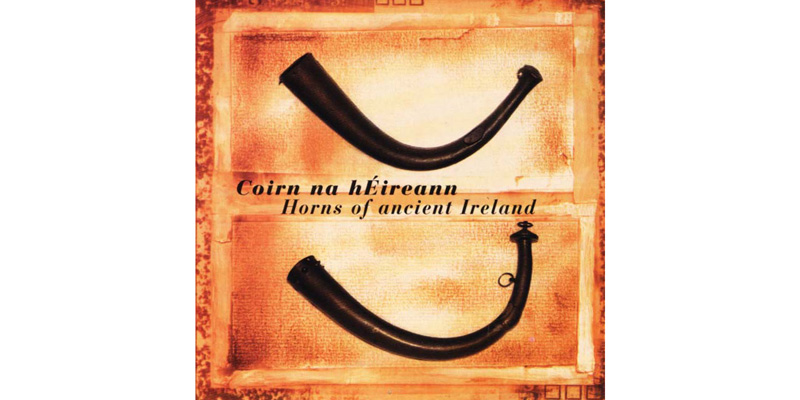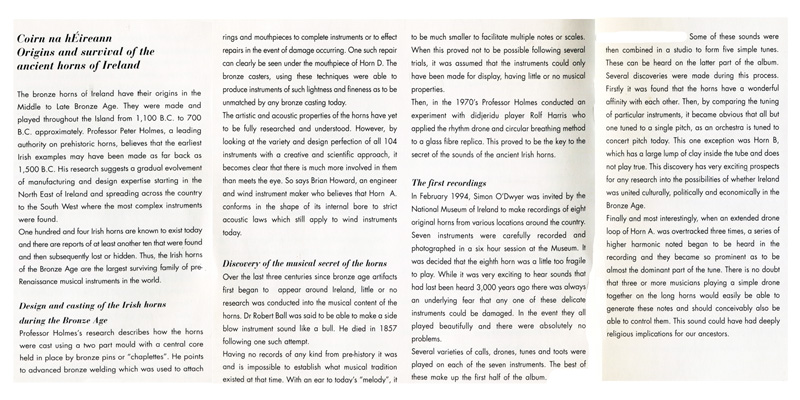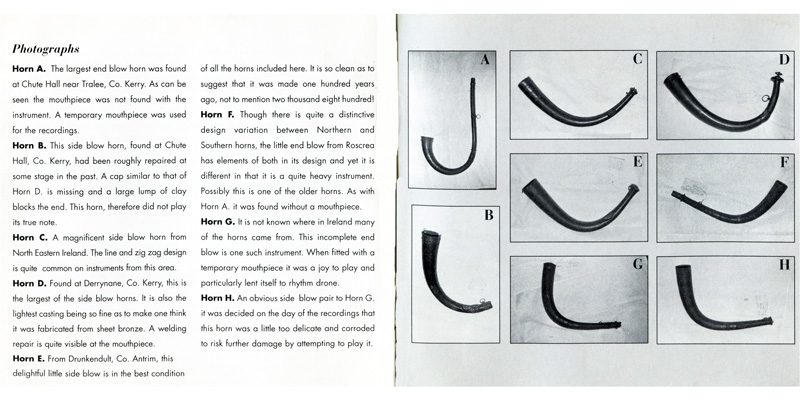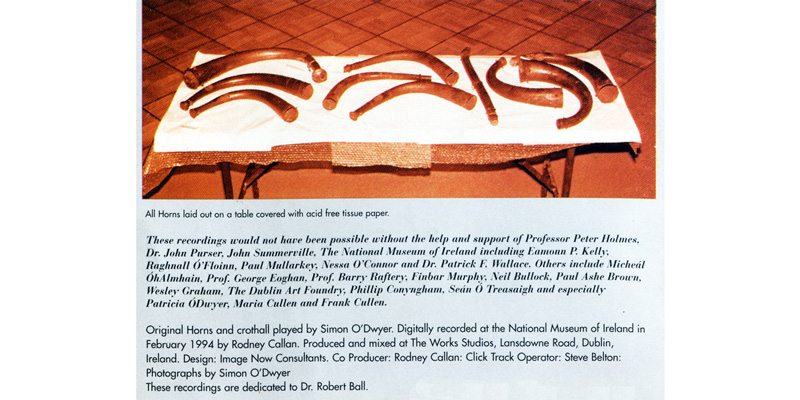
Coirn na hÉireann
Horns of Ancient Ireland
Early in 1994, The National Museum of Ireland was completing a new exhibition dedicated to ancient and prehistoric Ireland. A number of Bronze Age horns and crotals from the great Irish collection were to be included. Ancient Music Ireland was requested to play and record eight original horns from locations around Ireland so that sample sounds of the instruments could be supplied to the public as part of the display. Bearing in mind the unique aspect of the proposal, it was decided to employ expert sound engineer, Rod Callan to make the recordings. As the Museum would not permit original horns to be taken out of the building an area was made available adjoining the Treasury Room for a total of three hours.
Temporary mouthpieces were made for three end blown horns which were incomplete and it was decided not to attempt to play one of the side-blown examples due to the amount of corrosion and its overall fragility. Each instrument was played in a number of variations including bending notes, repeated rhythms, sound alteration and simple fundamentals.
The sounds were recorded using up to date digital equipment and the space had a good acoustic though occasionally a particular sample would have to be repeated if the 46A bus passed by outside! A single crotal was also included in the sample recordings. These were brought to ‘The Works Studio’ at Landsowne Road in Dublin where individual sounds could be catalogued and some over tracking attempted. To facilitate this, a click track had been employed during recording. To allow for subsequent looping and overlaying. This time in the studio was particularly exciting where t was realised how rich the voices of the horns were and how well they worked together in groups. Probably the most important discovery was the presence of overtones in the sounds.
The large end-blown horn from Kerry (A) was looped to create a continuous drone. This was then over tracked three times. The intention was to create a rich fundamental foundation to which higher side blown sounds could be added. To every one’s surprise when the sound was played back over the studio speaker a series of higher notes were clearly audible and even pronounced in the recording. This was the first occasion when overtones were detected as an unequal part of the voice of an Irish Bronze Age horn. Though there can be no certainty as to how horns were played in their own time, the properties and designs do appear to favour tone alteration and enrichment. This startling discovery ultimately led to the release of the album ‘Overtone – Ancient Music of Ireland’ in 209 and has dramatically influenced the ways in which reproduction horns are interpreted in their own right and as accompaniment to other instruments.
The recordings of seven original Irish Bronze Ag horns remain the only examples in existence. Any future playing will not be allowed due to the invasive nature of physically holding and blowing and the strength and vibration of the sounds generated by the horns. Yet these recordings did capture the musical nature of the ancient instruments and almost certainly reflect much of the sound that they were designed to produce at the behest of an accomplished musician.
Ancient Music Ireland would like to thank Dr. Patrick E. Wallace (former Director), Dr. Eamonn Kelly, Keeper of Antiquities and all the staff of the National Museum of Ireland for their help in facilitating these recordings and for the vital work they do to ensure that the rich ancient musical heritage of Ireland is preserved for future generations. These recordings are dedicated to the memory of Robert Ball who died following an attempt to play an Irish Bronze Age horn in 1857 AD.
All rights reserved. 1994 ©





